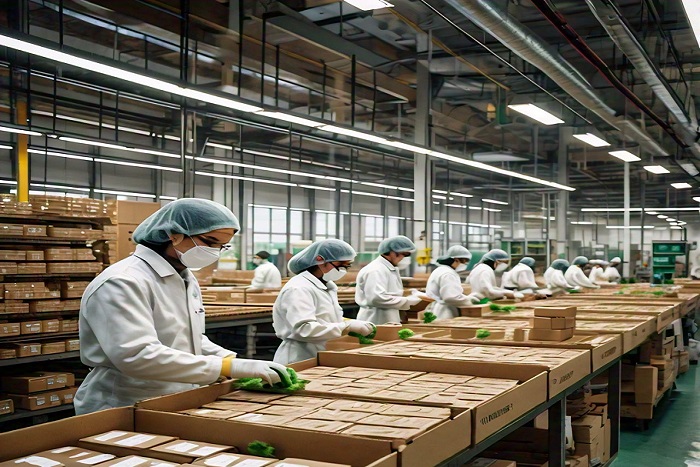Business
The Rise of Eco-Friendly Packaging: A World of Innovation

- Eco-friendly packaging is evolving with innovative materials like plant-based plastics and seaweed-based alternatives, focusing on sustainability and reduced environmental impact.
- Advancements in recyclability, biodegradability, and minimalistic design are shaping the future of packaging, aligning with the principles of a circular economy.
In a time when sustainability has become a major part of consumers’ preferences, environmentally friendly packaging is now a major trend within the industry of packaging. Both consumers and companies have become more conscious of the impact they have on the environment. New packaging designs play a significant part in shaping the future. This article explores the growing field of environmentally friendly packaging. It will highlight the newest innovations and their importance.
The Shift Towards Sustainability
The industry of traditional packaging is long-timely criticized due to the use of single-use plastics and other non-biodegradable substances. But a rising demand for alternatives that are sustainable has triggered the development of new ideas. Eco-friendly packaging includes a range of products designed to limit environmental impacts, which include recycled materials, biodegradable options as well as compostable packaging.
Innovative Materials Leading the Charge
One of the latest advancements in eco-friendly packaging is the utilization of new products. Many companies are increasingly using products like plant-based plastics such as recycled paper, biodegradable film. In particular, the mushroom-based packaging that uses mycelium for a biodegradable replacement to styrofoam is gaining traction as an environmentally sustainable alternative.
Another notable innovative idea is using seaweed as a source of packaging. Seaweed is a rapidly growing, sustainable resource that could be transformed into various packaging materials, ranging including containers and films. The ability of seaweed to naturally degrade is a great option to reduce the amount of plastic waste.
Recyclability and Circular Economy
Recycling remains an important factor when it comes to eco-friendly packaging. The advancements in recycling technology enable us to design packaging that is not just recyclable, but constructed from recycled materials. This method is compatible with concepts of a circular economy which means that products and other materials are recycled and reused which reduces the requirement for new resources.
Companies are increasingly embracing packaging products made from recycled cardboard, paper, as well as plastics. They can be repurposed and processed which can close the loop while minimizing production waste. In addition, some businesses are looking into the possibility of using recycled materials to transform materials that are discarded into useful packaging solutions.
Biodegradability and Compostability
Compostable and biodegradable packaging is yet another field of research and development. Contrary to conventional plastics which require many years to break down, Biodegradable products break into smaller pieces and are more secure. Compostable packaging, which is made of substances like bamboo or cornstarch, is able to be processed by factories that compost, turning into rich, nutritious compost.
The main distinction between compostable and biodegradable packaging is in their recycling methods. Biodegradable packaging breaks down into organic components but it could leave behind microplastics when not managed properly. Packaging that is compostable, in contrast, is intended to break down into organic matter, without leaving toxic remnants.
Industry Trends and Future Outlook
The industry of eco-friendly packaging is growing rapidly, and there are many trends influencing the future of this industry. Incorporating smart technology like QR codes as well as NFC tags, in packaging allows customers to get details about the sustainable nature of the item as well as its packaging. This increases confidence in the product and allows for informed buying choices.
In addition, the trend towards simple packaging design is gathering momentum. The reduction in packaging materials not only reduces the amount of waste, but also reduces transport cost and emission. Many companies are opting to use minimalist designs that emphasize functionality as well as environmental sustainability.
In the future, the environmentally friendly packaging market is slated for continued growth and advancement. With the advancement of technology and as consumer demands change, new materials and methods will be developed which will enhance the sustainability of solutions to packaging.
Conclusion
Green packaging can be a huge move towards a more green future. Thanks to advances in materials such as recycling, biodegradability and even design, the market has made strides towards reducing the environmental footprint. With both businesses and consumers beginning to take note of these advances and innovations, the landscape of packaging will change, leading to an eco-friendly, environmentally sustainable future.

















































